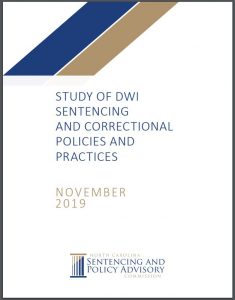Crime statistics are compelling reading. When federal agencies release new estimates of the national crime rate, the news media pounce. The crime rate, its causes, and how to address crime are being hotly debated. Violent crime in particular prompts concern about public safety and the appropriate policy response.
So, what do the data tell us about trends in violent crime in North Carolina?
Where the data come from and what they can and can’t tell us about crime
There are three main sources of crime data in North Carolina: police data, court data, and victim surveys (Figure 1).
This post focuses on the first two data sets: police and court data. Although the victim survey data (from the annual National Crime Victimization Survey) provide estimates for both the nation and North Carolina, they are challenging to use and an in-depth discussion requires more than a single blog post.

